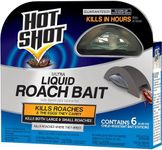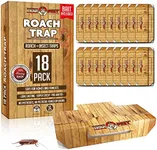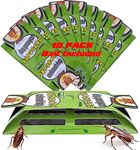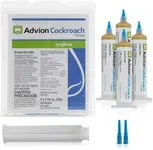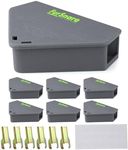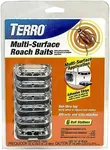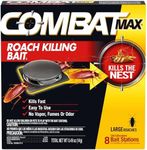Buying Guide for the Best Roach Traps
Choosing the right roach trap can make a significant difference in effectively managing and eliminating a roach infestation in your home. Roach traps come in various types and with different features, so it's important to understand what to look for to ensure you select the best option for your needs. Here are some key specifications to consider when picking a roach trap and how to navigate them.Type of TrapRoach traps come in several types, including glue traps, bait stations, and electronic traps. Glue traps use a sticky surface to catch roaches, bait stations contain poison that roaches carry back to their nest, and electronic traps use electricity to kill roaches. The type of trap you choose depends on your preference for dealing with the roaches and the severity of the infestation. Glue traps are good for monitoring and small infestations, bait stations are effective for larger infestations, and electronic traps are useful for quick elimination.
Active IngredientsThe active ingredients in roach traps are the chemicals that attract and kill the roaches. Common active ingredients include fipronil, hydramethylnon, and boric acid. Fipronil and hydramethylnon are effective at killing roaches quickly, while boric acid is a slower-acting but long-lasting option. If you have pets or children, you may want to choose traps with less toxic ingredients. Consider the level of infestation and safety concerns when selecting the active ingredient.
Ease of UseEase of use refers to how simple it is to set up and maintain the roach traps. Some traps require more effort to set up and monitor, while others are straightforward and require minimal maintenance. If you prefer a hassle-free solution, look for traps that are easy to place and dispose of. Consider your willingness to handle the traps and the time you can dedicate to monitoring them when making your choice.
Coverage AreaThe coverage area indicates how much space a single trap can effectively cover. Larger areas may require multiple traps to ensure thorough coverage. If you have a significant infestation or a large area to treat, look for traps that specify a larger coverage area or plan to purchase multiple traps. Assess the size of the area you need to treat and choose traps accordingly to ensure effective control.
LongevityLongevity refers to how long the trap remains effective before needing replacement. Some traps are designed to last for several months, while others may need to be replaced more frequently. If you prefer a low-maintenance option, look for traps with a longer lifespan. Consider how often you are willing to replace the traps and the duration of the infestation when selecting a trap with the appropriate longevity.
SafetySafety is an important consideration, especially if you have pets or children. Some traps contain toxic chemicals that can be harmful if ingested or touched. Look for traps that are designed to be pet and child-safe, with enclosed bait stations or non-toxic ingredients. Assess the safety features of the traps and choose one that minimizes risk while still being effective at controlling roaches.


